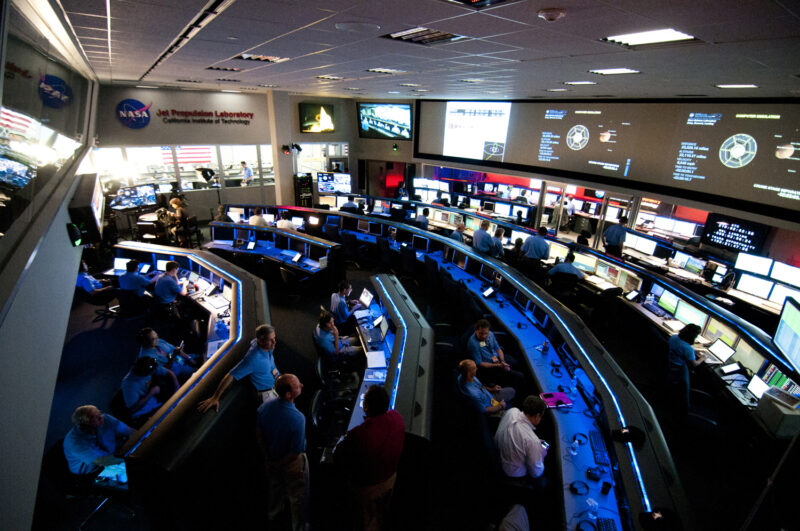
For decades, NASA’s Jet Propulsion Laboratory in Pasadena, California, has led the world in robotic space exploration. When the U.S. has sent rovers to Mars, or probes to the farthest reaches of the solar system, you can be sure that JPL scientists had a hand in building the craft and/ or operating them. Now … a sign of the times? Late yesterday (February 6, 2024), JPL’s director Laurie Leshin announced in a memo that the NASA facility will lay off hundreds of employees this week. The cuts are coming in anticipation of massive funding cuts in the next federal budget, specifically related to the proposed Mars Sample Return mission.
This week, JPL will be letting go of 530 employees – approximately 8% of its workforce – and 40 additional contractors, Leshin said.
Mars Sample Return budget slashed
This is JPL’s second round of layoffs since the start of 2024. The Los Angeles Times reported:
In January, 100 on-site contractors lost their jobs after NASA directed the lab to reduce spending in anticipation of severe budget cuts for the Mars Sample Return mission, an ambitious effort managed by JPL that would bring pieces of the red planet back to Earth for study …
Though Congress has not yet finalized appropriations for next year, NASA has instructed JPL to prepare for a federal budget that could cap Mars Sample Return spending in the 2024 fiscal year at $300 million, 36% of the previous year’s $822-million budget allocation and less than 1/3 of the $949 million the Biden administration has requested for the program.
NASA administrator Bill Nelson said in a statement:
To spend more than that amount, with no final legislation in place, would be unwise and spending money NASA does not have.
Jet Propulsion Laboratory missions
JPL has many NASA programs underway, including the Europa Clipper mission scheduled for launch in October 2024. But, according to SpacePolicyOnline.com, the $8-11 billion Mars Sample Return (MSR) mission is a core element of the future:
MSR is turning out to be significantly more expensive than expected. The top priority of the two most recent planetary science Decadal Surveys from the National Academies of Sciences, Engineering, and Medicine, the NASA-ESA MSR program would bring back to Earth the samples being collected on Mars right now by the Perseverance rover. The 2022 Decadal Survey estimated the cost at $5.3 billion, but an independent review last fall said it more likely would be $8-11 billion.
A shift in emphasis?
I recall in the late 1970s, not long after the end of the Apollo missions that sent humans to the moon, when astronomers were debating the relative merits of human spaceflight versus robotic planetary exploration. Policymakers formed committees and arguments were heard on both sides. Ultimately it was decided to focus the U.S. space program not on human spaceflight, but on the robotic exploration of the planets. And explore them we have! It has been a glorious time to be a space enthusiast.
Meanwhile, the human space program – the idea of sending humans to the moon or Mars, for example – languished. We didn’t realize back then that it would languish for some 50 years … essentially our whole adult lives!
And now humans are headed back to the moon with NASA’s Artemis program. It’s hard not to wonder where the winds of change will take us next …
Bottom line: NASA’s Jet Propulsion Laboratory – for decades a leader in robotic exploration of the planets in our solar system – will cut 8% of its workforce this week.











